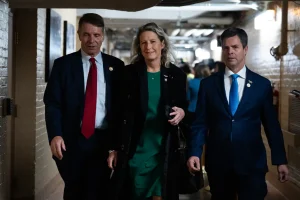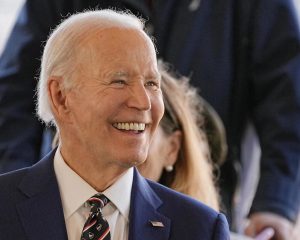India vs. Pakistan Is Also U.S. vs. China When It Comes to Arms Sales

The last time India and Pakistan faced off in a military confrontation, in 2019, U.S. officials detected enough movement in the nuclear arsenals of both nations to be alarmed. Secretary of State Mike Pompeo was awakened in the middle of the night. He worked the phone “to convince each side that the other was not preparing for nuclear war,” he wrote in his memoir.
That clash quickly cooled after initial skirmishing. But six years later, the two South Asian rivals are again engaged in military conflict after a deadly terrorist attack against tourists in Indian-controlled Kashmir. And this time there is a new element of uncertainty as the region’s most important military alliances have been redrawn.
Changing patterns in the flow of arms illustrate the new alignments in this particularly volatile corner of Asia, where three nuclear powers — India, Pakistan and China — stand in uneasy proximity.
India, a traditionally nonaligned country that has shed its history of hesitance toward the United States, has been buying billions of dollars in equipment from the United States and other Western suppliers. At the same time, India has sharply reduced purchases of low-cost arms from Russia, its Cold War-era ally.
These connections have injected superpower politics into South Asia’s longest-running and most intractable conflict.
The United States has cultivated India as a partner in countering China, while Beijing has deepened its investment in its advocacy and patronage of Pakistan as India has grown closer to the United States.
At the same time, relations between India and China have deteriorated in recent years over competing territorial claims, with clashes breaking out between the two militaries at times. And relations between the world’s two biggest powers, the United States and China, have hit a nadir as President Trump has launched a trade war against Beijing.
This combustible mix shows how complex and messy alliances have become as the post-World War II global order has fractured. The volatility is compounded by South Asia’s history of frequent military confrontations, with armed forces on both sides that are prone to mistakes, increasing the risk that an escalation could get out of hand.

“The U.S. is now central to India’s security interests, while China increasingly plays a comparable role in Pakistan,” said Ashley Tellis, a former diplomat who is a senior fellow at the Carnegie Endowment for International Peace.
As India now takes military action against Pakistan, it has had the United States on its side more forcefully than ever in recent years.
Prime Minister Narendra Modi of India spoke with both Mr. Trump and Vice President JD Vance in the initial days after the April 22 terrorist attack in Kashmir. The strong backing voiced by Trump administration officials was seen by many officials in New Delhi as a green light for India’s plan to retaliate against Pakistan, even if U.S. officials urged restraint.
An indication of the changing dynamics was the conspicuous absence of President Vladimir V. Putin of Russia as Mr. Modi took calls from more than a dozen world leaders in the days after the terrorist attack. The Russian foreign minister spoke with his Indian counterpart a week after the attack, and Mr. Modi and Mr. Putin finally spoke this week, officials said.
For its part, China has led public support for Pakistan, describing it as an “ironclad friend and all-weather strategic cooperative partner.”
These trends could increasingly be reflected in military conflicts.
“If you think about what a future conflict between India and Pakistan might look like, it would increasingly look like India fighting with U.S. and European platforms and Pakistan fighting with Chinese platforms,” said Lyndsey Ford, a former senior U.S. defense official who is currently a senior fellow at the Observer Research Foundation America. “The close security partners of both countries have evolved significantly in the last decade.”

As Pakistan’s importance to the United States has declined, it has turned to China, which has long offered an open embrace.
Beijing, which was the source of only 38 percent of Pakistan’s weapons in the mid-2000s, has provided about 80 percent over the past four years, according to the Stockholm International Peace Research Institute, which closely studies global weapons flows.
At the same time, India has slashed its dependence on Russian weapons by more than half. Between 2006 and 2010, about 80 percent of India’s major weapons came from Russia. Over the past four years, that figure has fallen to about 38 percent, with more than half of Indian imports coming from the United States and allies like France and Israel.
The one area of exception for Pakistan’s frost with the United States is the F-16 program. Pakistan has expanded its F-16 arsenal over the past two decades, and the Biden administration pushed through a contract worth nearly $400 million for service and maintenance of the fighter jets.
U.S. officials worry that with the hyper-nationalism in both India and Pakistan, where two well-stocked militaries operate in a tight air corridor and amid mutual suspicion, even the smallest of mistakes or exceeding of orders could lead to catastrophic escalations.
“A crisis where you have cross-border airstrikes and an aerial dogfight, like we saw in 2019, carries significant escalation risks,” said Ms. Ford, the former U.S. defense official. “And that’s all the more problematic when it involves two nuclear-armed neighbors.”


